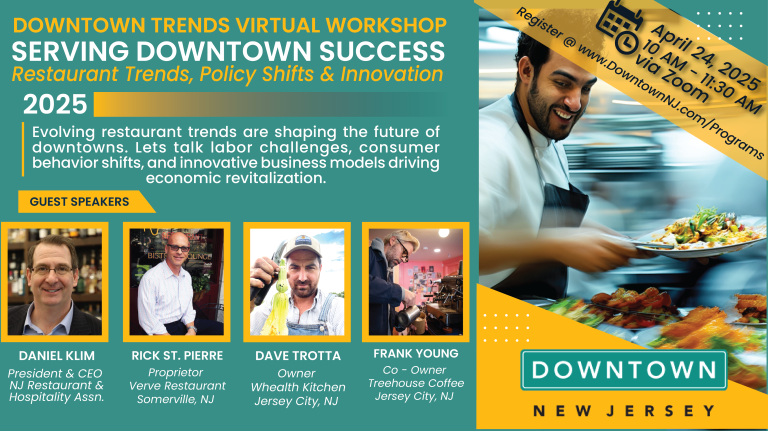Effective Growth Strategies for Business Improvement District
By Cesar J. Claro
Principal, Claro Ventures
September 7, 2022
I have learned quite a bit during my non-profit career and now it is my opportunity to share those lessons with the newest generation of economic development leaders. Over three decades as President & CEO of the Staten Island Economic Development Corporation (SIEDC) – and during an incredible five-year period starting in 2012 – my team and I created three BIDs in the borough. To my knowledge, no one else in the history of the City of New York can make such a claim.
Two of these BIDs had unique distinctions, which made the success all that sweeter and the challenges all that more difficult. The West Shore BID is one of a handful of industrial BIDs in the city and the South Shore BID was the city’s first non-contiguous BID. During this period of growth for SIEDC, we took on challenges head on and learned volumes about how to succeed in the world of BID management. One of the most important things that I learned is that creating a BID can often be the easiest part of the process. Growing it to be a successful and lasting organization is an entirely different challenge. Listed below are three proven methods that I believe are key to growing a BID.
Speak to Every Stakeholder – the Great Idea is Waiting for You If you are in economic development, then you are in the people business. Taking the time to talk to every stakeholder in district – as challenging as that may sound – is a worthy effort. Aside from the fact that it is good BID politics (everyone’s opinion matters) – trust me – one great idea will emerge. A month after launching the New Dorp Lane BID, my team and I hosted merchant meeting. After two hours (the first few meetings are long for everyone), a local merchant suggested hosting a classic car show. My staff and I looked at each other a bit incredulously. None of us were car enthusiasts and we didn’t have any idea how to execute this event nor if there was even any demand for it. Nonetheless, after investigating the logistics of a car show, we tried a one-year experiment. Although I was skeptical at first, I was pleasantly surprised by the results. We sold out the show, drew 3,000 visitors on a slow Sunday and made a significant profit. I was sold on the idea and the next year we had more cars, more attendees and made even more money. The event continues to this day as the BIDs signature event – all because we listened to someone who suggested something outside of our comfort zone.
If you are in economic development, then you are in the people business. Taking the time to talk to every stakeholder in district – as challenging as that may sound – is a worthy effort. Aside from the fact that it is good BID politics (everyone’s opinion matters) – trust me – one great idea will emerge. A month after launching the New Dorp Lane BID, my team and I hosted merchant meeting. After two hours (the first few meetings are long for everyone), a local merchant suggested hosting a classic car show. My staff and I looked at each other a bit incredulously. None of us were car enthusiasts and we didn’t have any idea how to execute this event nor if there was even any demand for it. Nonetheless, after investigating the logistics of a car show, we tried a one-year experiment. Although I was skeptical at first, I was pleasantly surprised by the results. We sold out the show, drew 3,000 visitors on a slow Sunday and made a significant profit. I was sold on the idea and the next year we had more cars, more attendees and made even more money. The event continues to this day as the BIDs signature event – all because we listened to someone who suggested something outside of our comfort zone.
Explore Other Towns There is nothing wrong with copying someone else’s idea – especially when it is for the greater good. When we were organizing the West Shore Industrial BID, we were fortunate to be invited to visit other industrial BIDs in the city. We borrowed many of their successful programs and more importantly learned about their deficiencies. The BID world is a small one and many of the successful strategies work in virtually every environment. Directors and supporters should work together, collaborate frequently (thank you Downtown New Jersey), share ideas, and celebrate success. I recently visited the BID in Millburn and learned about their priority strategies based on merchant survey feedback. They have listened to stakeholders, communicated with other BIDs to propose solutions and have shared their successes and challenges in an open and frank way. Sometimes the answers to your questions are in the next town down the road and the next great idea for your community might be just a walking tour away.
There is nothing wrong with copying someone else’s idea – especially when it is for the greater good. When we were organizing the West Shore Industrial BID, we were fortunate to be invited to visit other industrial BIDs in the city. We borrowed many of their successful programs and more importantly learned about their deficiencies. The BID world is a small one and many of the successful strategies work in virtually every environment. Directors and supporters should work together, collaborate frequently (thank you Downtown New Jersey), share ideas, and celebrate success. I recently visited the BID in Millburn and learned about their priority strategies based on merchant survey feedback. They have listened to stakeholders, communicated with other BIDs to propose solutions and have shared their successes and challenges in an open and frank way. Sometimes the answers to your questions are in the next town down the road and the next great idea for your community might be just a walking tour away.
Temporary Suspensions
We’ve all been in that situation where a service we had been providing for years was just not as effective as it once was. As directors we question if the program simply ran its course, if the vendor failed to meet expectations or if the money is better spent on something else. It can be difficult decision to end a program or fire a vendor, so I recommend suspending the service temporarily. Tell as few stakeholders as possible (just enough to secure approval) and then see if anyone misses the service. If your phone rings off the hook, then simply reinstate it and work with the vendor to address your concerns. If the response is silent or minimal, then it’s time for you and your board to explore reducing or eliminating it. This is a healthy exercise for any non-profit – especially a BID. This type of proactive approach to management shows your stakeholders that you are actively monitoring conditions on the ground and can free up funding to grow the BID with new services and programming.
Parting Thoughts
BIDs are living, breathing organisms that are affected by seemingly endless external forces. However, if you are committed to growing your BID, you must embrace those pressures and actively commit to seeking success. Make sure to listen to all the voices in the room, learn from other experts and challenge yourself and your partners. These may seem like basic and simple concepts, but in practice they can be difficult to master.
Cesar J. Claro is a Principal at Claro Ventures – an economic development consulting firm based in Jersey City. Cesar served as President & CEO of the Staten Island Economic Development Corporation for almost thirty years and remains Executive Director of the Richmond County Savings Foundation (RCSF). Cesar is committed to the Garden State and has awarded millions of dollars to Hudson and Essex county non-profits, is a member of Downtown New Jersey and serves on the Board of the New Jersey Regional Planning Association.
Under Cesar’s leadership, SIEDC grew its budget from $50,000 to $4 Million annually, launched three BID’s, created multiple merchant associations, hosted major business and health events, and secured a $10 million NYS Downtown Revitalization Initiative grant. Cesar was instrumental in growing its membership base from seven to two hundred paid members.

Claro-Ventures.com
Claroventures@gmail.com
(718) 300-2884


